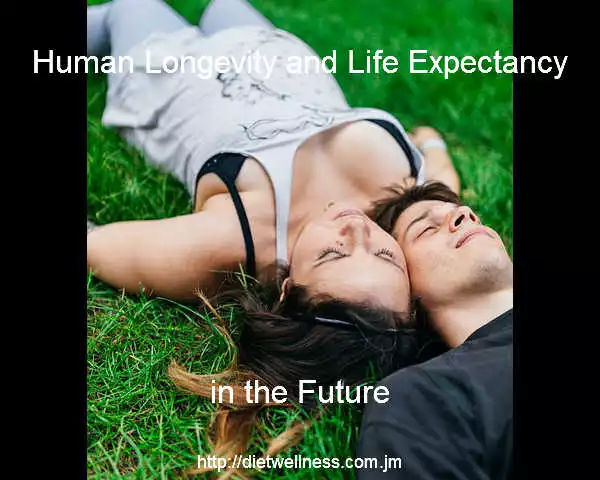Human Longevity and Life Expectancy
In this article I have provided an overview of the fascinating subject of Human Longevity and Life Expectancy and why it is probably going to increase more than you may expect.
If you are over 50, this article has important information for you This subject is vast and its implications for humanity, at both the individual and collective level, are huge.
This article will set the scene for a series of articles that will explain in more detail, what is happening, why it’s happening, what it will mean for you and how you can make sure you are fully prepared to take advantage of the opportunities that will be available to maximize your personal longer healthier life with the expectation of your life expectancy increased.
I believe we are very fortunate, as mature people in a developed nation, to be living at such an exciting time.
Table of Contents Human Longevity and Life Expectancy
The Science Behind Human Longevity
The science behind human longevity is fascinating and continually evolving, providing endless streams of knowledge that are increasingly changing how we understand our lifespan.
It’s a complex interplay of genetics, lifestyle factors, environment and even seemingly random events. Genes undeniably play an integral part- certain genes such as those involved in damage repair pathways and oxidative stress responses have been found to be associated with long lives.
However, the science expands further than mere genetics; factors like diet, physical activity level, socialization patterns and even gut microbiota can deeply influence life expectancy.
Groundbreaking research unveils metabolic processes where energy production sparks the creation of free radicals that potentially cause harmful cellular damages over time- a core aspect underpinning aging.
From this understanding emerges possibilities for counteracting these processes through targeted nutritional intakes or specialized health interventions.
The intertwining between our biological ecosystem and environmental interactions shapes the mesmerizing panorama of human longevity.
Revolutionary Times
We find ourselves in truly revolutionary times when it comes to human longevity and life expectancy.
Gone are the days when being bound by the genetic lottery was an unalterable fate.
Instead, we stand on the precipice of a new dawn, where science and technology hold hands tighter than ever, promising not just years, but quality years added to our lives.
This shift towards extending human lifespan isn’t just about adding more candles to the birthday cake; it’s about rewriting the narrative of aging itself.
In this exhilarating voyage into longer lives, we’re not mere passengers but active participants.
Through breakthroughs in genomics, AI-driven healthcare, and personalized medicine, we are offered a palette with which to paint our longevity masterpiece.
Encouragingly, this journey also intertwines with daily choices regarding nutrition, exercise, and mindfulness — underscoring that longevity is not solely a gift from high-tech wizards but something accessible through conscious living.
The quest for extended life expectancy is no longer shrouded in wishful thinking but illuminated by tangible paths that invite us all to tread boldly onwards.
The numbers speak for themselves
To extend our lifespan without improving our health-span would be pointless, maybe even cruel, and would place even greater pressure on our social security systems and national budgets, at a time when the ever increasing population of people over 65 is already threatening to swamp them.
The numbers clearly highlight a crucial fact: in the leading 20 countries, people on average live to be 80, yet sadly, they spend the final 8 years battling health issues.
It’s essential to understand that merely adding years to our lives without enhancing the quality of those years would not only be futile but potentially harsh.
Such a scenario would further strain our already pressured social security and financial systems, especially as the population aged 65 and above continues to grow at an alarming rate.
Let’s focus on not just living longer but living healthier, for a brighter future for all.
Trending History
Before we look into the crystal ball and attempt to see into the future, let’s briefly review the recent history of longevity and current predicted life expectancy statistics.
“Life expectancy,” according to the World Health Organization website, is “the average number of years a person can expect to live, if in the future they experience the current “age-specific” mortality rates in the population.”
In other words, no significant changes occur in the person’s lifetime; either positive or negative. In the last 100 years, life expectancy in Developed Nations has increased by 50% from 53. 6 years to 80.4 years.
This has been due to a combination of two factors; a reduction in child mortality and older people living longer.
See James Oppen article on Broken Limits to Life Expectancy for reveling statics on Life expectancy in years vs years in Australia, Iceland, Japan and other countries for some interesting insights.
Is It the food?
The main reasons for this massive increase have been advances in food supply and nutrition, vastly improved sanitation and hygiene, clean drinking water, Technological breakthroughs, the advent of major new medical technologies and medicines (e.g. antibiotics), better housing, including clean heating systems (i.e. replacing coal fires), and increased awareness and knowledge about the importance of a healthy lifestyle.
Many longevity scientists believe that over the next 10 years there will be dramatic advances in biotechnology that will radically change the future prospects for longevity from which we can all potentially expect a significant increase in life expectancy.
There is widespread belief that an average life expectancy of 100 years is possible in developed nations in that time-frame.
Take advantage of the situation
So taking action right now in all the key areas of your lifestyle will increase your chances of being around to take advantage of these imminent benefits.
Research suggests that there are 4 areas for continuing development and public education that must be addressed simultaneously, and with urgency if as many of us as possible are to reap the full benefits that will be available:
- Continuing the great work being carried out by Medical institutes and public health professionals across the globe to combat these chronic degenerative diseases This work has already saved many lives and improved the lives of many others, and it needs to continue.
- Continue to educate people; that contracting these chronic diseases as they age is not an inevitability, and that they can significantly reduce the risks of contracting them by leading a healthy lifestyle i.e. adopting a healthy anti aging diet and avoiding the unhealthy foods and ingredients that damage their health, by avoiding unhealthy addictions, by a regular exercise and fitness practice and by reducing the stress that weakens the body’s immune system and invites these diseases in.
- In his fascinating article “A Wrinkle in Time” Stuart Jay Olshansky, a Professor in the School of Public Health at the University of Illinois, Chicago made the following statement:- “Scientific evidence now strongly supports the idea that it’s time to invest in the future of humanity by encouraging the commensurate political will, public support, and resources required to slow aging, and to do so now, so that most people currently alive might benefit from the investment.” and that “there is ample reason to be optimistic that decelerated aging can be achieved for humans.”
- As I said in the introduction, the longevity revolution is already happening in biotechnology and medical science, and is going to result in a quantum leap in our lifespans, but even more importantly, in how long we will stay healthy. What would have been considered science fiction 20 years ago is now becoming a reality.
The Science behind the trend
The human genome project, completed in 2003, has opened up a multitude of amazing possibilities. The new field of “tissue engineering” is enabling medical laboratories to create replacement body parts and organs using an individual’s own cells, and work already underway includes growing new organs, breast tissue, windpipes and bladders, among many other body parts. Over the next 10 years, major advances in biotechnology will radically change our future prospects for longevity from which we can all potentially expect a significant increase in life expectancy.
Exploring the Factors of Human Longevity
The quest for longevity has indisputably gripped the human race’s curiosity and imagination since time immemorial.
Exploring the factors that influence human longevity is akin to decoding the quintessential rules of an intricate, immersive game- halting age or even managing to roll back a few years off it.
A compelling body of research proposes that genetic predisposition only contributes to about 25% of our lifespan, with environmental and lifestyle factors defining majorly the remaining percentage.
Contrary to popular beliefs, practicing healthy habits can significantly shape your aging process towards vitality.
Multiple studies reveal exercising regularly, maintaining a nutrient-rich diet, structural social relationships, adequate and quality sleep, mindfulness practices are more than just wellness buzzwords; they attribute extensively towards curtailing chronic illnesses and enhancing lifespans.
Also increasingly gaining scientific validation is calorie restriction which could potentially slow down aging at cellular level only spicing up this intriguing conversation on human longevity further.







